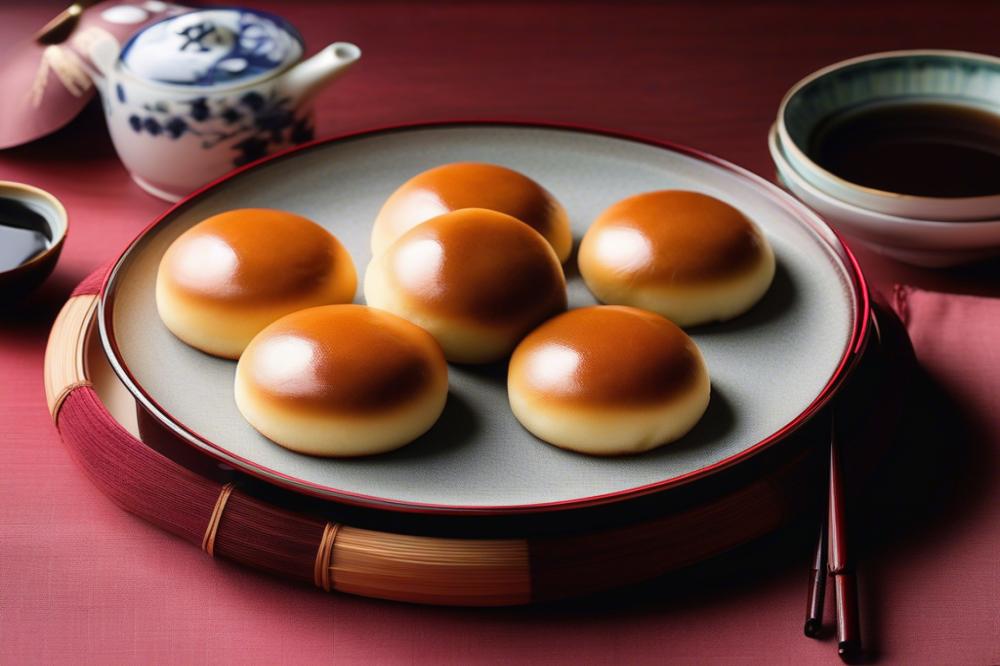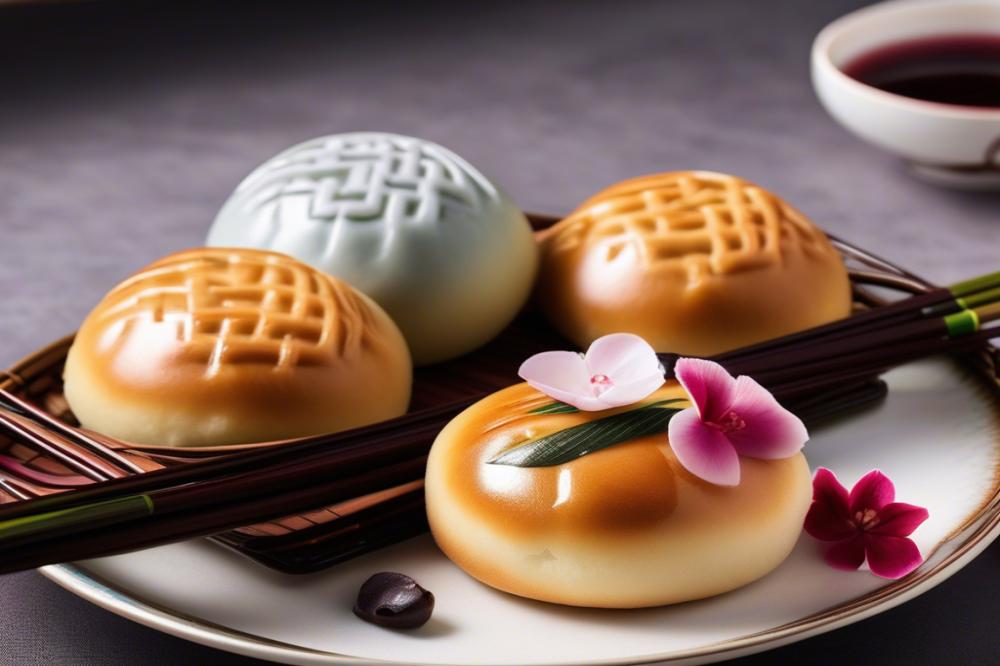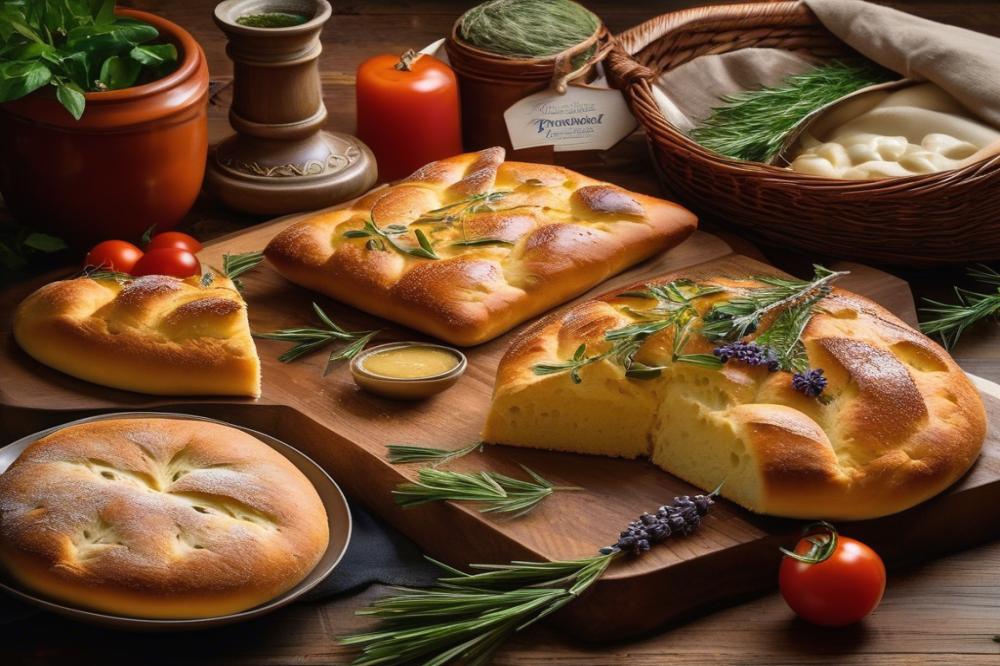Red Bean Paste Filled Buns: A Japanese Classic
red bean paste buns have secured their place as a cherished staple in Japanese cuisine. These delightful sweet buns are filled with anko, a smooth and sweet red bean paste made from adzuki beans. Many people enjoy them not just in Japan, but across the globe as a representation of Asian pastries. Their culinary significance extends beyond a mere treat; they embody a rich history and an array of traditions.
In the realm of traditional desserts, anko has always been a favorite among many. This aromatic filling lends itself beautifully to various desserts. You might find it inside steamed buns or as a topping for mochi. The texture of the smooth paste provides an added contrast to the fluffy exterior. This combination creates a comforting yet sophisticated bite.
Many cultures in Asia have their versions of sweet fillings, making them a popular choice in dim sum and other festive meals. Japanese sweets often highlight the delicate balance between flavors and textures, and red bean paste buns encapsulate this idea perfectly. Homemade buns are often crafted for celebrations, bringing families together to share this delightful delicacy. In every bite, one can taste the love and care poured into their creation.
Ultimately, red bean paste buns reflect a harmonious blend of flavors and traditions. They appeal to both the young and the old, bridging generations through their timeless popularity. Relishing these sweet buns offers a glimpse into the heart of Japanese culture, showcasing a beloved classic that continues to delight many.
History and Origins

The roots of red bean paste filled buns can be traced back to various influences in Asian cuisine. Chinese steamed buns, known as bao, played a significant role in their development. These soft and fluffy breads inspired Japanese bakers to create similar treats that would resonate with their own culture. Over time, the addition of sweet fillings became more common, leading to the widespread popularity of these delightful sweet buns in Japan.
Anko, the sweetened red bean paste inside these snacks, has a fascinating history. Originally introduced from China, this ingredient underwent many changes as it settled into Japanese cooking. Unlike its Chinese counterpart, the Japanese version became smoother and sweeter, making it a favorite for desserts. Anko soon became a staple in various traditional sweets, and its versatility allowed it to shine in both festive and everyday foods.
As the concept of steamed buns evolved, so did their place in Japanese cuisine. These homemade buns became essential components in dim sum and Japanese sweets culture. They can be found in tea houses, markets, and celebrations. Each bun often tells a story of local traditions and the blending of cultures. Some variations include mochi, which also features sweet fillings but with a different texture and taste.
Interestingly, the popularity of red bean paste buns has not only remained but expanded. Today, they appeal to a wide audience beyond Japan. Many people enjoy these tasty Asian pastries for their unique flavors and comforting textures. The simplicity of these treats alongside their historical significance makes them a beloved choice among dessert lovers. They embody a tradition that continues to please palates across generations.
Ingredients and Key Components

To create delightful red bean paste filled buns, known as anko buns, you will need specific ingredients. The dough is crucial; it usually consists of flour, sugar, yeast, milk, and a touch of salt. For a standard batch of sweet buns, prepare about 3 cups of all-purpose flour, a tablespoon of sugar, a teaspoon of active dry yeast, and a pinch of salt. Don’t forget to add around 1 cup of warm milk and 2 tablespoons of softened butter to give the dough a rich flavor and texture.
The filling, anko, is made from adzuki beans. You will need about 1 cup of these red beans. Cook them until tender, then mash and sweeten them with approximately 1/2 cup of sugar. Adjust this according to your taste; some prefer it sweeter. You can also add a drop of vanilla for a hint of extra flavor.
When making homemade buns, consider additional elements that can enhance the experience. A dash of matcha powder gives a gentle green tea flavor. You might explore adding some sesame seeds as a topping for a subtle crunch. All these factors contribute to the authentic taste of these traditional desserts.
Quality ingredients are essential for achieving the best results. Choosing high-quality adzuki beans and fresh flour can make a notable difference. The texture of the buns heavily relies on the flour’s quality. It’s not just about ingredients; it’s about how they come together. Each component plays a role in the final product’s success.
As you prepare your buns, remember that the steaming process also impacts the texture. Use a bamboo steamer or a traditional dim sum pot. The gentle steam creates a soft, fluffy consistency, perfect for these Asian pastries. Pay attention to the timing; too little steam can leave them dense, while overcooking can dry them out.
Simplifying the process will allow you to enjoy the art of making these sweet fillings. Even the smallest details matter. When you let your buns cool before serving, they can be more enjoyable to eat and showcase the flavors effectively. Overall, the journey of making these delightful red bean paste buns is as rewarding as the final taste.
Method: Making Red Bean Paste Buns

Making these delightful sweet buns at home is an engaging process. Let’s dive into a step-by-step guide to create delicious steamed buns filled with anko, the famous red bean paste.
Preparing the Dough
The first step involves gathering your ingredients. For the dough, you will need flour, sugar, baking powder, warm water, and a bit of vegetable oil. Begin by mixing the flour, sugar, and baking powder in a large bowl. Gradually add the warm water while stirring. Blend until a sticky mixture forms. Next, incorporate the oil, which adds softness to the dough.
Work the dough on a clean surface for roughly 10 minutes. Knead until it turns smooth and elastic. After kneading, place the dough in a bowl coated with oil, cover it with a damp cloth, and let it rise in a warm area for about 30 to 60 minutes. The goal here is for it to double in size, creating fluffy indeed buns.
Making the Filling
While the dough is rising, it’s time to focus on anko, your sweet filling. You can either buy it or make it yourself. For homemade anko, you’ll need adzuki beans, sugar, and a pinch of salt. Soak the beans overnight to soften them. Cook the soaked beans in fresh water until they are tender, which may take about an hour or longer.
Once cooked, drain the beans and return them to the pot. Add sugar to the beans; adjust according to your taste, and a sprinkle of salt to enhance the sweetness. Cook the mixture over medium heat, mashing the beans as they thicken. Aim for a smooth consistency if you prefer smooth filling, or leave some beans whole for a chunkier texture. Set aside your anko to cool.
Shaping the Buns
After the dough has risen, punch it down gently to release air. Divide it into small portions, each around the size of a golf ball. Take one piece and flatten it into a circle, about 3 to 4 inches in diameter. Place a spoonful of the cooled anko into the center of the dough.
Now comes the fun part: sealing the bun. Carefully fold the edges of the dough over the filling, pinching them together to secure the anko inside. Ensure there are no gaps; you want a tightly sealed bun. Roll each filled dough ball gently between your palms to keep a smooth shape. Continue this process until all your dough pieces are filled.
Steaming the Buns
For steaming, you will need a steamer basket, lined with parchment paper to prevent sticking. Ensure there’s enough space for the buns to expand while steaming. Arrange the shaped buns in the basket, allowing plenty of room between them. Cover with a clean cloth to keep the heat in.
Bring water to a boil in a pot or wok before placing the steamer basket on top. Steam the buns for about 15-20 minutes. Keep in mind that steaming times may vary slightly based on the size of the buns. Once they are puffed up and look delightful, they are ready to be enjoyed.
These homemade treats are perfect as a traditional dessert or a delightful breakfast. Savor these Asian pastries and share them with friends for a taste of Japan in your home.
Variations and Creative Twists
Exploring the world of red bean paste buns opens many delightful possibilities. Many people enjoy experimenting with flavors that complement or contrast with the traditional anko filling. For instance, adding a bit of matcha powder to the dough imparts a lovely green hue and earthy taste, enhancing the overall enjoyment of the sweet buns.
Consider using mochi as a surprise filling in these steamed buns. This chewy layer can add a textural contrast to the smoothness of the red bean paste. The combination of the soft dough and sticky mochi creates a deliciously unique experience. Some people even enjoy making the mochi from scratch for an extra special touch.
In addition to mochi, other sweet fillings can be used. Sweetened coconut or even chocolate ganache may surprise your taste buds. Incorporating these options allows for the creation of fusion versions. Think about a chocolate red bean bun that combines two beloved flavors into one. These modern adaptations can make traditional dessert more appealing to newcomers.
Another creative twist involves adding fruits to the filling. Chopped strawberries or mango can create a refreshing and vibrant pop of flavor. This can transform the Asian pastries into something uniquely tantalizing. Not only does it enhance taste, but it also adds color, making the buns visually stunning.
For those who enjoy savory flavors, consider a mix of red bean paste and a hint of cheese or caramelized onion. This twist can attract those who want to explore a non-sweet version of the beloved bun. Remember, homemade buns can be a canvas for many different ideas. The possibilities are endless when it comes to updating this classic treats.
Lastly, think about leveraging popular dishes found in dim sum. For a delightful surprise, combine the red bean filling with custard or taro paste. This blend showcases a unique cultural fusion that pays homage to both Japanese sweets and other Asian culinary traditions. Embrace these variations and let your creativity flow when making these delectable treats.
Serving Suggestions and Pairings
These sweet buns shine when served warm. Placing them on a simple, elegant platter enhances their appeal. You can dust the tops with powdered sugar for a touch of elegance. Another idea is to wrap them in colorful napkins, adding a playful vibe to your serving style. Consider serving them alongside a small dish of additional anko. This allows guests to add more filling if they desire.
When it comes to beverages, a cup of green tea complements the flavors perfectly. The earthy notes of the tea balance the sweetness of the buns well. For something more indulgent, try pairing with milk tea. This creation is popular in many Asian cultures and brings out the rich taste of the red bean paste. Some enjoy these buns with a warm bowl of soymilk. This pairing adds a comforting touch, perfect for a cozy gathering.
Pairing these buns with mochi can create a delightful dessert spread. Various flavors of mochi add interesting textures and tastes. If you’re serving a larger meal, consider including dim sum alongside the sweet buns. The contrasting flavors of savory dishes make for a well-rounded dining experience.
These buns often play an important role during special occasions. Families often prepare homemade buns for celebrations such as the Lunar New Year. Red bean paste represents good fortune and prosperity, making it a fitting choice. During festivals, these pastries are shared and enjoyed by many. They symbolize unity and happiness in gatherings.
Incorporating these buns into your dessert selection also works well. Their presence elevates any traditional dessert table. Guests often appreciate the variety of sweet fillings, as they explore different flavors. Whether served at a birthday party or during a casual tea time, they add a touch of culture to the experience.
The Timeless Appeal of Red Bean Paste Filled Buns
Savoring sweet buns filled with rich anko brings an unmistakable joy that few other treats can replicate. This classic dessert is a cherished part of Japanese culture. Each bite offers a delightful mix of soft dough and smooth red bean paste, creating a comforting experience that is both satisfying and delicious.
Baking offers more than just food; it’s a way to express creativity and share love. Making these delightful treats at home can become a fun activity for friends or family. Picture the warmth of the kitchen filling the house as the buns rise in the oven, their sweet scent inviting all to gather around. Experimenting with different fillings or shapes can make each endeavor special.
Asian style baking holds a unique charm in the culinary world. Red bean paste buns reflect centuries of tradition that intertwine with modern tastes. Besides their deliciousness, these treats carry stories and memories. They remind many of family gatherings and festivals. Enjoyment comes not only from eating but also from the connections built through sharing food.
In the end, consider trying your hand at making these delightful buns. With a bit of patience and practice, they can become a favorite recipe in your kitchen. Celebrate the art of baking while enjoying the rich flavors and cultural significance embedded in each bun. Your taste buds will thank you for it.



